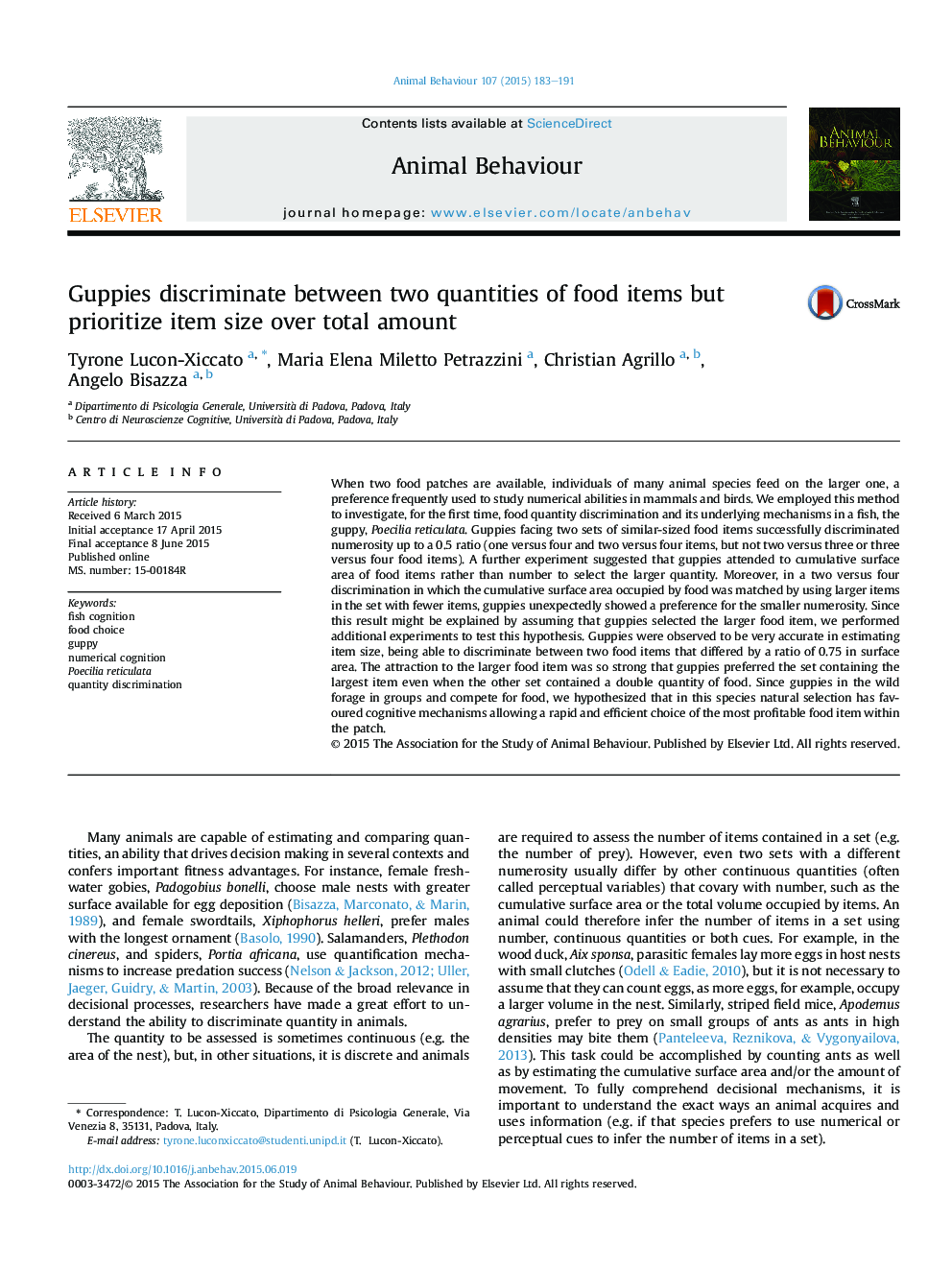| Article ID | Journal | Published Year | Pages | File Type |
|---|---|---|---|---|
| 8489745 | Animal Behaviour | 2015 | 9 Pages |
Abstract
When two food patches are available, individuals of many animal species feed on the larger one, a preference frequently used to study numerical abilities in mammals and birds. We employed this method to investigate, for the first time, food quantity discrimination and its underlying mechanisms in a fish, the guppy, Poecilia reticulata. Guppies facing two sets of similar-sized food items successfully discriminated numerosity up to a 0.5 ratio (one versus four and two versus four items, but not two versus three or three versus four food items). A further experiment suggested that guppies attended to cumulative surface area of food items rather than number to select the larger quantity. Moreover, in a two versus four discrimination in which the cumulative surface area occupied by food was matched by using larger items in the set with fewer items, guppies unexpectedly showed a preference for the smaller numerosity. Since this result might be explained by assuming that guppies selected the larger food item, we performed additional experiments to test this hypothesis. Guppies were observed to be very accurate in estimating item size, being able to discriminate between two food items that differed by a ratio of 0.75 in surface area. The attraction to the larger food item was so strong that guppies preferred the set containing the largest item even when the other set contained a double quantity of food. Since guppies in the wild forage in groups and compete for food, we hypothesized that in this species natural selection has favoured cognitive mechanisms allowing a rapid and efficient choice of the most profitable food item within the patch.
Keywords
Related Topics
Life Sciences
Agricultural and Biological Sciences
Animal Science and Zoology
Authors
Tyrone Lucon-Xiccato, Maria Elena Miletto Petrazzini, Christian Agrillo, Angelo Bisazza,
